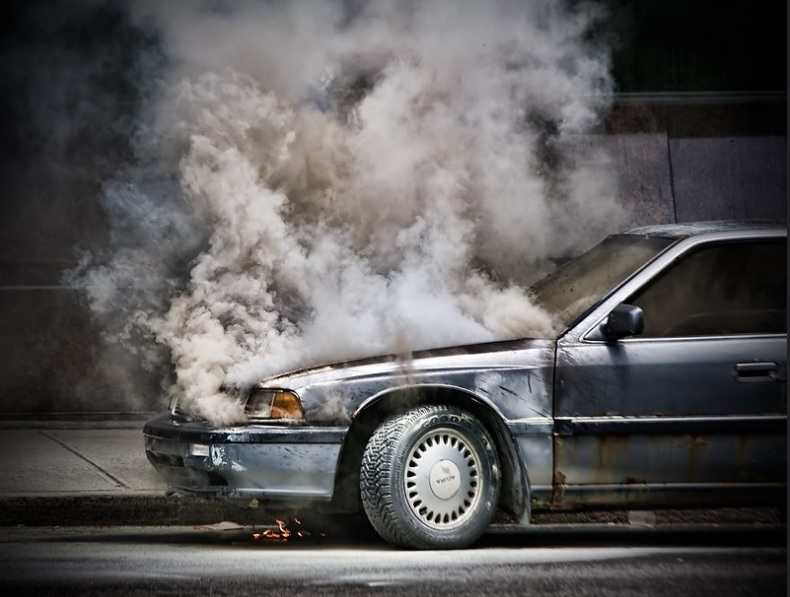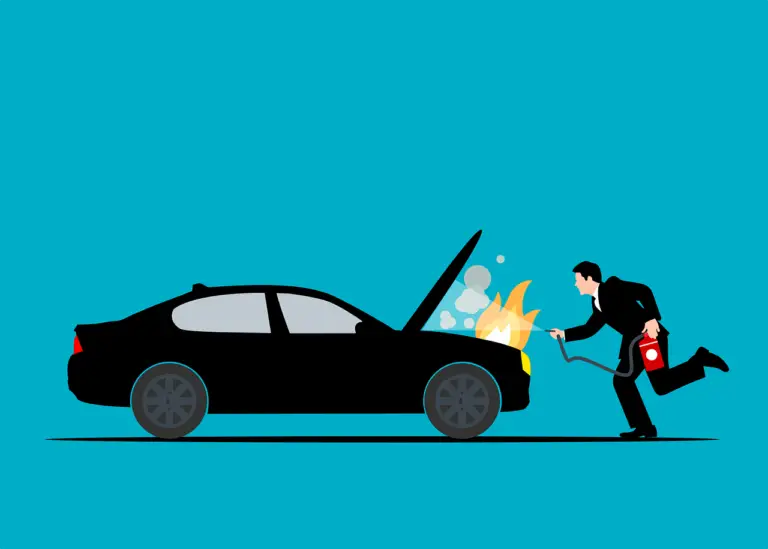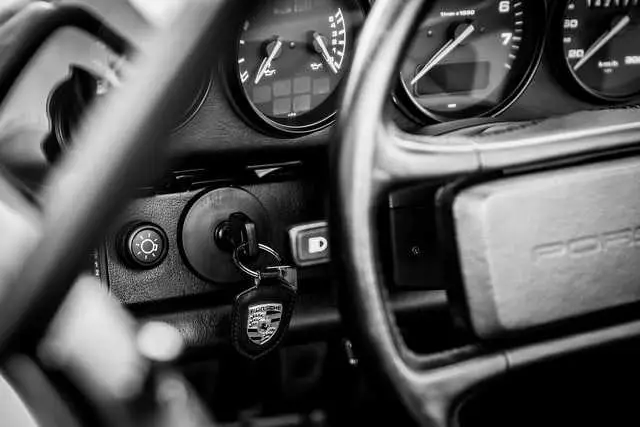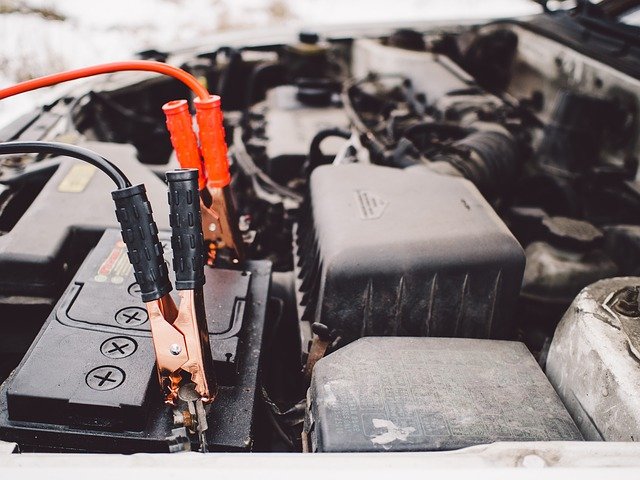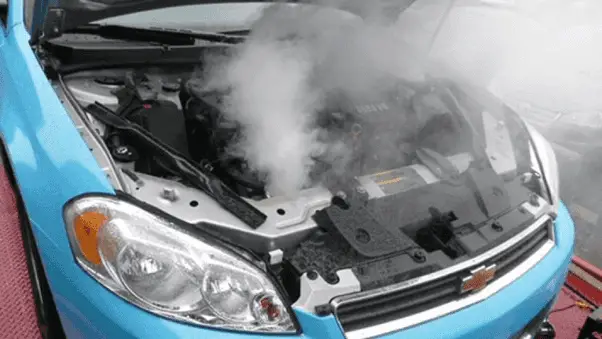How Long Can Your Car Overheat?
We all know that cars can overheat, but what if overheating begins to occur and you cannot immediately fix it, you may want to know how long your car can overheat without serious damage happening. Well, I will try my best to answer this question.
An engine can easily overheat if other components such as coolant hoses fail. But how long can your car overheat before it breaks down and stops working? This depends on the type of vehicle and engine, however, overheating will cause some damage quickly especially if the engine is aluminum.
Even if it is not severe, high engine temperature may cause the pistons to burn and break down over time. This can result in serious engine damage if it is not fixed. Other problems can result from overheating such as blown gaskets and cracked heads so overheating can be very costly. Even temporary overheating will cause performance problems with the car’s engine.
Engine coolant (with antifreeze) is what keeps an engine from overheating. It’s common for the coolant to need to be replaced every 2 years or 24,000 miles, whichever comes first. The hoses also need to be regularly checked to prevent overheating.
But if any of these failures happen and cause overheating how long can your car overheat without a serious problem happening? Let’s find out.
Table of Contents
- How Long Can a Car Overheat For?
- What to do if your car overheats
- How to Spot the Risks of an Overheated Engine
- How to Prevent Your Car from Overheating?
- Conclusion
How Long Can a Car Overheat For?
It is almost impossible to say for certain how long a car can overheat and still run OK. This will depend on many factors such as:
- The make and model of the car.
- The condition of the engine.
- How seriously the car is overheating.
- Whether the engine’s block is made of aluminium or not.
- The cause of the overheating.
With the above factors in mind, how long can a car overheat?
A car can overheat for a few hours and still be able to function, but if it has been sitting on a hot day on the side of the road without any airflow it could overheat and not be able to start.
According to this answer, it may take only 30-60 seconds for the maximum overheating temperature to cause damage to the engine.
Aluminium engines will most probably warp very quickly after overheating whereas cast iron engines will last longer because they are tougher. Overheating is bad news for an engine though so it does need to be fixed quickly before any serious damage ocurrs.
However, if your engine is only overheating by a small amount it may be OK to continue driving. In this situation make sure that you can believe the gauge on your dashboard, it may not be very accurate so be careful and certainly don’t ignore the fact that your car is running hot. Check the obvious things such as coolant level and check for small leaks or cracks in hoses and make sure they are tight.
If the engine temperature gauge shows the engine nearing the maximum mark or rising steadily from about three-quarters maximum temperature, it is best to stop driving and make a visual check. At this point, you should switch off the engine and stop for about 20 minutes or more to allow the engine to cool down before driving on again.
If the problem is not obvious the engine needs to be looked at as soon as possible.
Here’s another opinion about this:
Driving an overheating car, is almost as bad as driving a car with little to no oil in it. Something is going to blow up or seize up very quickly.
Jared Wilson, Engineer with about 20 years experience. Source: Quora.
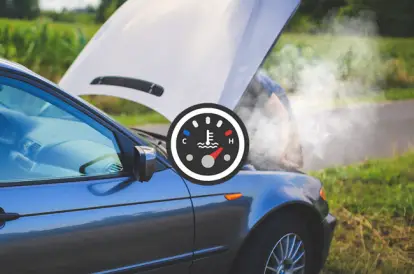
What to do if your car overheats
William Grissom, a Mechanical Engineer has some great advice here on what you should do if your car overheats and you see steam coming from your engine. His advice is for cast iron engines and will allow you to complete your journey without doing damage to your engine. He says you should refill the coolant level every 50 miles or so.
On the same conversation found on Quora, Edward Schwarz claims that he has been able to drive his car for up to 35 miles without coolant and that his method causes no damage. Remember, that this is only one person’s experience but could get you out of an emergency where you need to drive your vehicle to get it looked at and repaired, and have no way to top up the coolant levels.
How to Spot the Risks of an Overheated Engine
The engine of a car is the most important part of the vehicle. Without it, cars wouldn’t be able to function. You can tell that an engine is overheating by checking for the following symptoms:
- A hot engine
- Overly warm air coming from vents
- A high-temperature gauge reading
- Water leaking from under the hood or under the radiator cap
- Some signs that indicate that your car may be overheating include:
- Seeing steam coming from under the hood; -smoke coming out of the hood;
- Feeling the heat on your feet from under the dash
How to Prevent Your Car from Overheating?
We need to keep an eye on the temperature in the car. If it is too high, we should stop driving and find a place to cool it down. The best thing to do is open all windows, turn off the AC, park in the shade, run the engine for 10 minutes, and then drive. It is also important not to let children or animals ride in a hot car.
Conclusion
Heat is the engine’s worst enemy. When an engine overheats, it can lead to catastrophic damage like broken pistons and valves, blown head gaskets, and warped cylinder heads. As these are costly to fix, it is best not to drive without waiting to cool the engine first and then as soon as possible get the car checked.
If you’ve reached that critical temperature of 185 to 200 degrees Fahrenheit (or at least 230 degrees Fahrenheit for some models), then damage to your car’s engine has probably already begun.
Amazon and the Amazon logo are trademarks of Amazon.com, Inc, or its affiliates.

